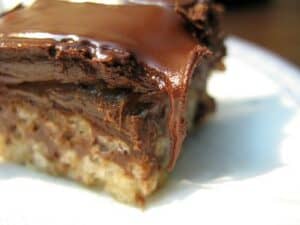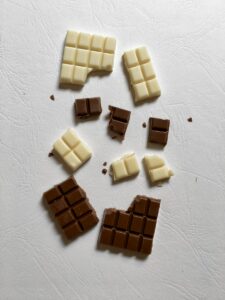The history of chocolate is rich and diverse, with origins tracing back to ancient civilizations. However, the question of where was the first solid chocolate bar made is a fascinating tale that includes the evolution from a bitter drink to a sweet treat, and the industrial revolution’s impact on confectionery.
In this article, we will dive into the world of chocolate bars, exploring the beginnings and development of candy bars, the key inventors and innovations that contributed to the first chocolate bar, and how the chocolate industry has expanded over time.
Where Was the First Solid Chocolate Bar Made: The Journey from Liquid to Solid Chocolate
Long before chocolate bars existed, cocoa beans were harvested from the cacao tree and used to create a chocolate beverage by the Mayans and Aztecs. This chocolate drink was bitter and often mixed with spices and chili peppers, rather than the sweetness we associate with chocolate today. It wasn’t until the introduction of sugar and the cocoa press in the 1800s that solid chocolate was made possible. The cocoa press, invented by Coenraad Johannes Van Houten, allowed cocoa solids and cocoa butter to be separated, creating the foundation for cocoa powder and solid chocolate.
Variety and Innovation in Chocolate Bars
One of the most striking features of the chocolate bar today is the sheer variety available to consumers. From the classic milk chocolate to dark chocolate, white chocolate, and even ruby chocolate, there is something for every taste preference. Moreover, the creativity of chocolatiers knows no bounds, as they continually experiment with new ingredients and flavor combinations, ranging from nuts and fruits to spices and even savory elements like bacon and cheese.
This innovation and variety in chocolate bars can be traced back to the pioneers of chocolate manufacturing, like Joseph Fry and Daniel Peter, who continually sought to improve the taste and texture of their products. As a result, we now have countless brands and types of chocolate bars to choose from, catering to every palate and dietary requirement.
The Rise of Artisan and Ethical Chocolate

In recent years, there has been a significant shift in consumer preferences toward artisan and ethically sourced chocolate bars. This trend is driven by a growing awareness of the environmental and social issues surrounding the chocolate industry, such as deforestation caused by unsustainable cocoa farming practices and the exploitation of cocoa farmers.
In response, many small-scale and artisan chocolate makers have emerged, focusing on producing high-quality chocolate bars using ethically sourced ingredients. These chocolatiers often work directly with cocoa farmers, ensuring fair wages and sustainable farming practices. Additionally, they place great emphasis on using natural and organic ingredients, resulting in chocolate bars that not only taste exquisite but also have a positive impact on the environment and the communities involved in their production. For example, the movement towards vegan chocolate reflects a broader commitment to ethical consumption and sustainability.
The First Chocolate Bar: Joseph Fry’s Revolutionary Invention

The first solid chocolate bar was made in 1847 by Joseph Fry, a British chocolatier who owned Fry’s Chocolate Factory in Bristol, England. Fry discovered that by mixing cocoa powder, sugar, and cocoa butter, he could create a paste that could be molded into a solid chocolate bar. This groundbreaking invention marked the birth of the mass-produced chocolate bar and changed the way people consumed chocolate.
Fry’s Chocolate Cream Bar: The First Filled Chocolate Bar
The first filled chocolate bar, Fry’s Chocolate Cream Bar, was also invented by Joseph Fry in 1866. This innovative confectionery combined a layer of sweet fondant cream with a coating of dark chocolate, setting the stage for countless other filled candy bars developed over time. Fry’s Chocolate Factory continued to create new and unique chocolate bars, such as Fry’s Turkish Delight, which remains popular today.
The Development of Milk Chocolate: Daniel Peter and the Swiss Influence

In 1875, Swiss chocolatier Daniel Peter created the first milk chocolate bar by adding condensed milk to the solid chocolate mixture. This new milk chocolate variety had a smoother texture and a sweeter taste, making it an instant hit with those who had a sweet tooth. Peter’s invention paved the way for other chocolate manufacturers to create their own milk chocolate bars, such as the iconic Hershey bar, which was introduced by Milton Hershey in 1900.
Cadbury Brothers: Competing for the Chocolate Crown
John Cadbury and his brother, Benjamin, were also instrumental in the development of the chocolate bar. The Cadbury Brothers opened a chocolate factory in Birmingham, England, in the mid-1800s and began producing their own cocoa powder and solid chocolate bars. In 1905, they introduced the world’s first milk chocolate bar with a higher cocoa content, known as Cadbury Dairy Milk. This new chocolate bar quickly gained popularity, and the Cadbury Brothers became fierce competitors with Fry’s Chocolate Factory.
White Chocolate and the Expansion of Chocolate Varieties

In the 1930s, the invention of white chocolate added another dimension to the chocolate industry. White chocolate, made from cocoa butter, sugar, and milk solids, offers a unique and creamy taste that differs from traditional milk and dark chocolate. Today, there are countless chocolate bar varieties, including a few candy bars that cater to those who prefer different flavors and textures, such as nuts, caramel, and fruit.
The World’s Largest Chocolate Bar and the Impact of World War
In 2011, the world’s largest chocolate bar, weighing 12,770 pounds, was created by Thornton’s in the United Kingdom, highlighting the continued fascination with chocolate bars. However, the history of chocolate bars has not always been sweet, as the world wars led to rationing and shortages of key ingredients, such as sugar and cocoa beans. During these difficult times, chocolate bars were often made with alternative ingredients, resulting in less appetizing flavors and textures.
Healthier Chocolate Bars: Catering to Health-Conscious Consumers

Another notable trend in the chocolate bar industry today is the growing demand for healthier options. As consumers become more health conscious, they are seeking chocolate bars with lower sugar content, higher cocoa percentages, and added health benefits, such as antioxidant-rich dark chocolate or chocolate bars infused with superfoods like goji berries and chia seeds.
Delve into the calming and therapeutic advantages of incorporating chocolate into your self-care and well-being practices by exploring Chocolate as a Form of Self-Care and Well-Being.
To cater to this demand, many chocolate manufacturers have introduced healthier alternatives to their traditional offerings, such as sugar-free or low-sugar chocolate bars, chocolate bars made with alternative sweeteners like stevia, and chocolate bars enriched with vitamins and minerals. This shift towards healthier options allows consumers to indulge in their favorite treats without compromising their health goals.
Discover the myriad of Cocoa Butter Benefits and how this natural ingredient can enhance your skincare routine.
The Evolution of the Chocolate Bar
Where was the first solid chocolate bar made? From the cocoa beans of the cacao tree to the mass-produced chocolate bars that satisfy our sweet tooth today, the journey of chocolate has been a fascinating one. The first solid chocolate bar was made by Joseph Fry in 1847, and since then, we have seen the development of various types of chocolate, including milk chocolate, white chocolate, and filled candy bars. The world of chocolate bars has come a long way since its liquid form origins, and it continues to evolve and delight our taste buds.
Explore the rich history and cultural significance of Chocolate in Ancient Civilizations to uncover its role in early societies.
